Philip Bingham
Model-based Reconstruction for Enhanced X-ray CT of Tri-structural Isotropic Particles
Mar 19, 2021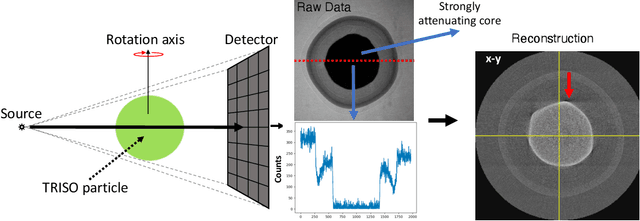
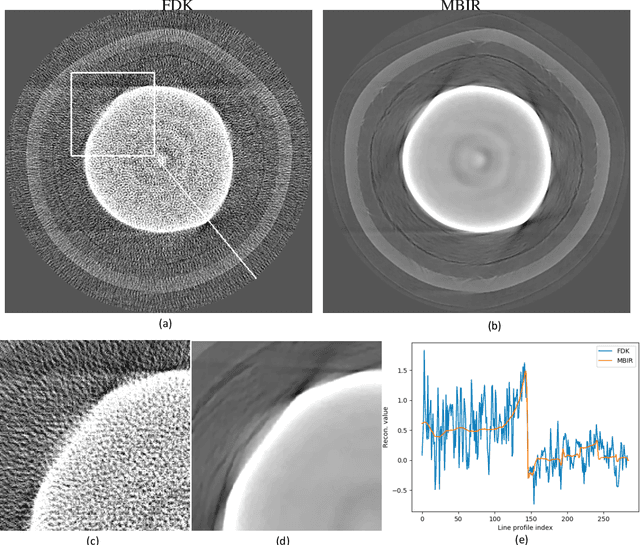
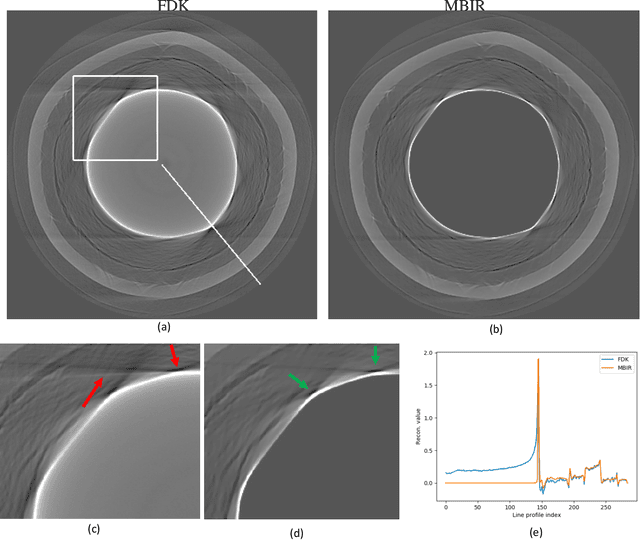
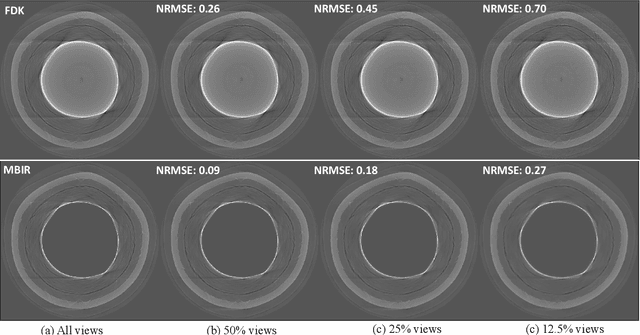
Abstract:Tri-Structural Isotropic (TRISO) fuel particles are a key component of next generation nuclear fuels. Using X-ray computed tomography (CT) to characterize TRISO particles is challenging because of the strong attenuation of the X-ray beam by the uranium core leading to severe photon starvation in a substantial fraction of the measurements. Furthermore, the overall acquisition time for a high-resolution CT scan can be very long when using conventional lab-based X-ray systems and reconstruction algorithms. Specifically, when analytic methods like the Feldkamp-Davis-Kress (FDK) algorithm is used for reconstruction, it results in severe streaks artifacts and noise in the corresponding 3D volume which make subsequent analysis of the particles challenging. In this article, we develop and apply model-based image reconstruction (MBIR) algorithms for improving the quality of CT reconstructions for TRISO particles in order to facilitate better characterization. We demonstrate that the proposed MBIR algorithms can significantly suppress artifacts with minimal pre-processing compared to the conventional approaches. Furthermore, we demonstrate the proposed MBIR approach can obtain high-quality reconstruction compared to the FDK approach even when using a fraction of the typically acquired measurements, thereby enabling dramatically faster measurement times for TRISO particles.
X-Ray CT Reconstruction of Additively Manufactured Parts using 2.5D Deep Learning MBIR
May 06, 2019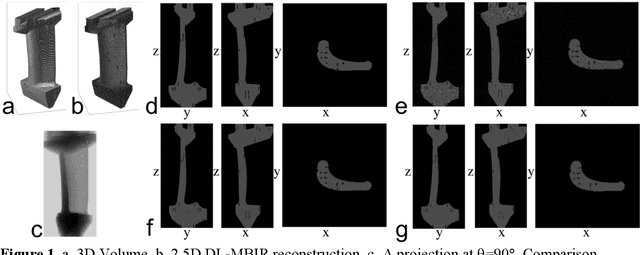
Abstract:In this paper, we present a deep learning algorithm to rapidly obtain high quality CT reconstructions for AM parts. In particular, we propose to use CAD models of the parts that are to be manufactured, introduce typical defects and simulate XCT measurements. These simulated measurements were processed using FBP (computationally simple but result in noisy images) and the MBIR technique. We then train a 2.5D deep convolutional neural network [4], deemed 2.5D Deep Learning MBIR (2.5D DL-MBIR), on these pairs of noisy and high-quality 3D volumes to learn a fast, non-linear mapping function. The 2.5D DL-MBIR reconstructs a 3D volume in a 2.5D scheme where each slice is reconstructed from multiple inputs slices of the FBP input. Given this trained system, we can take a small set of measurements on an actual part, process it using a combination of FBP followed by 2.5D DL-MBIR. Both steps can be rapidly performed using GPUs, resulting in a real-time algorithm that achieves the high-quality of MBIR as fast as standard techniques. Intuitively, since CAD models are typically available for parts to be manufactured, this provides a strong constraint "prior" which can be leveraged to improve the reconstruction.
 Add to Chrome
Add to Chrome Add to Firefox
Add to Firefox Add to Edge
Add to Edge